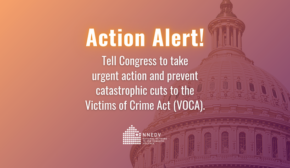The Violence Against Women Act Reauthorization Of 2013: Housing Protections (Section 601)
VAWA 2013 builds on landmark housing protections included in VAWA 2005 for survivors in federally-subsidized housing units/programs by 1) maintaining current protections, 2) protecting sexual assault victims (in addition to domestic violence, dating violence, and stalking victims) 3) expanding protections to cover all federally-subsidized housing programs 4) clarifying the notice tenants/participants must receive about their rights under VAWA and 5) including an emergency transfer policy requirement for landlords, managers and owners.
Impact for survivors: These protections expand the reach to more victims and provide consistency across the federal government to respond to victims’ needs. When properly and fully implemented, these protections should protect victims against discrimination due to the actions of perpetrators. Approximately 4 million additional housing units are covered; victims of sexual assault have access to the protections; and survivors can access life-saving emergency housing transfer options (so that they don’t have to become homeless when they need to flee their homes).
What does this mean for victim services agencies and state coalitions: Advocacy organizations should familiarize themselves with the law, provide training to housing groups and organizations, inform victims of their rights, work with housing agencies, landlords, managers and owners to implement the law and develop policies. This will be especially important around developing the emergency transfer policies. Advocacy organizations should monitor compliance with the law and report individual cases or non-compliance to NNEDV and HUD. Watch for additional guidance from NNEDV and HUD.
Maintains Current Protections
The landmark protections included in VAWA 2005 should ensure that victims of domestic violence, dating violence, and stalking have access to the criminal justice system without jeopardizing their housing and are not discriminated against because of their status as victims. The law states an individual’s status as a victim of domestic violence, dating violence, or stalking is not an appropriate basis for denial of tenancy or of program assistance by a PHA or landlord, so long as that individual would otherwise qualify for assistance. The law establishes that incidents of abuse shall not be good cause for terminating a lease held by the victim, and that the abuser’s criminal activity directly related to abuse shall not be grounds for eviction or termination. It specifies that the authority of an owner or PHA to evict or terminate perpetrators of abuse shall not be limited. The language gives landlords and PHAs the ability to bifurcate a lease to maintain the victim’s tenancy while evicting the perpetrator and to use certification documents in eviction cases.
Limitations: Victims must certify their status as victims by presenting appropriate documentation to landlord, manager or owner, and the language clarifies that victims can be evicted for lease violations or if their tenancy poses a threat to the community. There is a new provision that allows for the manager, owner or landlord to require third party verification if they receive “conflicting certification” – usually in cases where the perpetrator also claims to be the victim.
VAWA 2005 amended the Low Income Housing Assistance program, also known as the Section 8 or Housing Choice Voucher program, and the Public Housing Program. VAWA 2013 expands to all federally-subsidized housing programs.
Protects Sexual Assault victims
VAWA 2005 gave protections to victims of domestic violence, dating violence and stalking. VAWA 2013 expands these protections to victims of sexual assault.
Expands VAWA Housing Protections to Cover All Federally-Subsidized Housing Programs
While VAWA 2005 covered public housing, Section 8 vouchers and project-based Section 8, VAWA 2013 expands to cover all federally-subsidized housing programs (protections are maintained for these programs). These programs are administered by the U.S. Department of Housing and Urban Development, the USDA and the Treasury.
In some housing units, the perpetrator of violence is the only person in the household with established eligibility for the housing. In those cases, the victim will be given a chance to establish eligibility. If the victim is not eligible for the housing, the covered program must give the victim “reasonable time” to find new housing or establish eligibility under another housing program.
Newly “covered” programs include:
- USDA Rural Housing properties
- Low-Income Housing Tax Credit properties
- HUD’s McKinney-Vento homeless programs
- HOME Investment Partnerships program
- Section 221(d)(3) Below Market Interest Rate (BMIR) Program
- Section 236 Rental Program
- HOPWA housing program
- Section 202 supportive housing for the elderly and
- Section 811 supportive housing for people with disabilities
To learn more about these individual housing programs, please see the National Low-Income Housing Coalition’s Advocacy Guide 2013.
Requires Notice to Tenants of these Rights
While VAWA 2005 established a requirement that tenants/participants be notified of their VAWA rights, VAWA 2013 describes the notice requirements. HUD must develop the notice of rights and each public housing agency, manager and owner is required to provide the notice 1) at the time an applicant is denied residency 2) at the time that the individual is admitted to the program, 3) with any notification of eviction or termination of assistance. Notice must be developed in multiple languages (consistent with Executive Order 13166.).
Requiring notice at these times will help to ensure that victims will not face unlawful eviction and discrimination and that victims will be able to invoke their VAWA rights immediately if they do face such actions/discrimination.
Requires Housing Agencies to Adopt Emergency Transfer Policy
This provision will help victims flee violence and abuse without facing homelessness. The appropriate federal agency (HUD, USDA, Treasury) must develop and adopt emergency transfer plans that owners, managers and landlords must use to allow victims to transfer to another available and safe dwelling unit assisted under a covered housing program if the victim requests the transfer and reasonably believes that s/her is “threatened with imminent harm from further violence if the tenant remains within the same dwelling unit”. Victims of sexual assault can request transfer if the sexual assault occurred on the premises during the 90 day period preceding the request for transfer. The transfer policy must have reasonable confidentiality measures so that victim information is not disclosed. HUD must also develop a policy for how victims requesting a transfer would be eligible for a section 8 voucher.
Maintains:
- Requirement that public housing authorities must describe any goals, objectives, policies or programs to serve the needs of victims, in 5-year plans.
- Requirement to report annually description of services or amenities provided or offered to victims, any policies or programs that help victims obtain or maintain housing, and any policies or programs to prevent domestic violence, dating violence, sexual assault, and stalking or enhance victim safety.
- Requirement in “con” plan that housing strategies must include a description of the housing needs of victims of domestic violence, dating violence, sexual assault, and stalking, and how those needs will be met.
- HMIS Prohibition: Victim services providers are prohibited from entering any personal identifying information about any victim into the Homeless Management Information Systems (HMIS).





